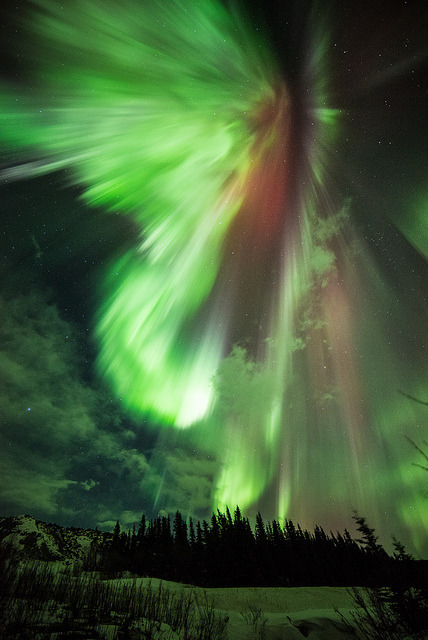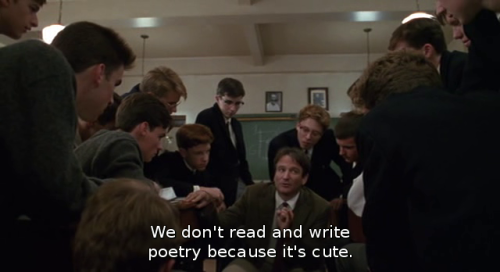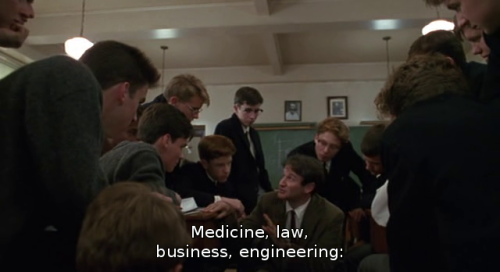Right?
Right?


;-)
More Posts from Duxgregis and Others
Women's Writing of Ancient Mesopotamia (New Book!)

A new book has just been released by Cambridge University Press entitled Women’s Writing of Ancient Mesopotamia An Anthology of the Earliest Female Authors!
It is an anthology of translations from the ancient Near East of various writings by women. The translations include letters, religious hymns, inscriptions, prophecies, and various other types of texts. All of them considered some of the earliest examples of writing done by women in history. The only downside is that the book is quite expensive right, but hopefully that will change in the future and/or a paperback edition will soon follow.
You can purchase it from Cambridge’s site, (even their U.K. site), or on Amazon where the Kindle is somewhat less expensive.
Regardless this is one of the best additions to ancient Near Eastern scholarship in recent years.
~Hasmonean


The total solar eclipse which crossed from Alaska to Texas spurred many to make the trip West in 1878. Dr. Henry Draper, a medical doctor and former chair of physiology at New York University, assembled a group who watched the eclipse from the railroad outpost of Rawlins, Wyoming Territory and made some observations.
Happy 4th of July… From Space!
In Hollywood blockbusters, explosions and eruptions are often among the stars of the show. In space, explosions, eruptions and twinkling of actual stars are a focus for scientists who hope to better understand their births, lives, deaths and how they interact with their surroundings. Spend some of your Fourth of July taking a look at these celestial phenomenon:

Credit: NASA/Chandra X-ray Observatory
An Astral Exhibition
This object became a sensation in the astronomical community when a team of researchers pointed at it with our Chandra X-ray Observatory telescope in 1901, noting that it suddenly appeared as one of the brightest stars in the sky for a few days, before gradually fading away in brightness. Today, astronomers cite it as an example of a “classical nova,” an outburst produced by a thermonuclear explosion on the surface of a white dwarf star, the dense remnant of a Sun-like star.

Credit: NASA/Hubble Space Telescope
A Twinkling Tapestry
The brilliant tapestry of young stars flaring to life resemble a glittering fireworks display. The sparkling centerpiece is a giant cluster of about 3,000 stars called Westerlund 2, named for Swedish astronomer Bengt Westerlund who discovered the grouping in the 1960s. The cluster resides in a raucous stellar breeding ground located 20,000 light-years away from Earth in the constellation Carina.

Credit: NASA/THEMIS/Sebastian Saarloos
An Illuminating Aurora
Sometimes during solar magnetic events, solar explosions hurl clouds of magnetized particles into space. Traveling more than a million miles per hour, these coronal mass ejections, or CMEs, made up of hot material called plasma take up to three days to reach Earth. Spacecraft and satellites in the path of CMEs can experience glitches as these plasma clouds pass by. In near-Earth space, magnetic reconnection incites explosions of energy driving charged solar particles to collide with atoms in Earth’s upper atmosphere. We see these collisions near Earth’s polar regions as the aurora. Three spacecraft from our Time History of Events and Macroscale Interactions during Substorms (THEMIS) mission, observed these outbursts known as substorms.

Credit: NASA/Hubble Space Telescope//ESA/STScI
A Shining Supermassive Merger
Every galaxy has a black hole at its center. Usually they are quiet, without gas accretions, like the one in our Milky Way. But if a star creeps too close to the black hole, the gravitational tides can rip away the star’s gaseous matter. Like water spinning around a drain, the gas swirls into a disk around the black hole at such speeds that it heats to millions of degrees. As an inner ring of gas spins into the black hole, gas particles shoot outward from the black hole’s polar regions. Like bullets shot from a rifle, they zoom through the jets at velocities close to the speed of light. Astronomers using our Hubble Space Telescope observed correlations between supermassive black holes and an event similar to tidal disruption, pictured above in the Centaurus A galaxy.

Credit: NASA/Hubble Space Telescope/ESA
A Stellar Explosion
Supernovae can occur one of two ways. The first occurs when a white dwarf—the remains of a dead star—passes so close to a living star that its matter leaks into the white dwarf. This causes a catastrophic explosion. However most people understand supernovae as the death of a massive star. When the star runs out of fuel toward the end of its life, the gravity at its heart sucks the surrounding mass into its center. At the turn of the 19th century, the binary star system Eta Carinae was faint and undistinguished. Our Hubble Telescope captured this image of Eta Carinae, binary star system. The larger of the two stars in the Eta Carinae system is a huge and unstable star that is nearing the end of its life, and the event that the 19th century astronomers observed was a stellar near-death experience. Scientists call these outbursts supernova impostor events, because they appear similar to supernovae but stop just short of destroying their star.

Credit: NASA/GSFC/SDO
An Eye-Catching Eruption
Extremely energetic objects permeate the universe. But close to home, the Sun produces its own dazzling lightshow, producing the largest explosions in our solar system and driving powerful solar storms.. When solar activity contorts and realigns the Sun’s magnetic fields, vast amounts of energy can be driven into space. This phenomenon can create a sudden flash of light—a solar flare.The above picture features a filament eruption on the Sun, accompanied by solar flares captured by our Solar Dynamics Observatory.
Make sure to follow us on Tumblr for your regular dose of space: http://nasa.tumblr.com
I have a new plan: to go mad.
Fyodor Dostoevsky, in a letter to his brother Michael (via ughpoems)
My kind of lady

Happy birthday, Marie Curie! In 1903, Curie and her husband shared a Nobel Prize in Physics for the discovery of radium and polonium. She was the first woman to win this award and later, the first woman to become a professor at the University of Paris. In 1911 she won another Nobel Prize, this time in chemistry, for producing radium as a pure metal and for further studies on radioactive elements. During World War I, she devoted herself to using radioactivity to help people. She set up mobile x-ray vehicles for soldiers in France, which were nicknamed petites Curies (“little Curies”). In the 1920s, radium was considered a miracle cure—you could even buy “Radium” brand butter, cigarettes, and beer. We now know that radioactivity itself causes cancer, but thanks to Curie, radiation therapy is still used today as an effective way to target cancerous tissues. Photo: Tekniska museet






Hey look, it’s these guys again. My website – My Facebook page – See me on LINE Webtoon!
...what we stay alive for.
















WEEKLY COMIC PICKS FOR 6.4.2014
This week we review Nailbiter #2, Rise of the Magi #1, Big Trouble In Little China #1, Black Widow #7, and Original Sin #3.
We took some advice from one of our viewers and tried to make this episode as spoiler-free as possible which also makes for shorter, more digestible episodes. Check it out below and let us know what you think.
If you like these videos, please show your support by giving them a Thumbs-Up, leaving a comment, and/or subscribing to our channel. It would really mean a lot, plus it’s nice to have some form of interaction with you guys so we know that other people besides us are into this kind of stuff.
We hope you like this episode. Until next week, let us know what you’re reading in the comments!






-
 ziggystardust64 liked this · 11 months ago
ziggystardust64 liked this · 11 months ago -
 picklejarred liked this · 11 months ago
picklejarred liked this · 11 months ago -
 orangesnlavender liked this · 11 months ago
orangesnlavender liked this · 11 months ago -
 weekendsatholtrenfrew liked this · 1 year ago
weekendsatholtrenfrew liked this · 1 year ago -
 iwannafuckdindjarin liked this · 1 year ago
iwannafuckdindjarin liked this · 1 year ago -
 theysteponyou reblogged this · 1 year ago
theysteponyou reblogged this · 1 year ago -
 scullys-scalpel liked this · 2 years ago
scullys-scalpel liked this · 2 years ago -
 movieteenagers liked this · 2 years ago
movieteenagers liked this · 2 years ago -
 hyperfixatingmenever reblogged this · 2 years ago
hyperfixatingmenever reblogged this · 2 years ago -
 hyperfixatingmenever liked this · 2 years ago
hyperfixatingmenever liked this · 2 years ago -
 lil-tumbles liked this · 2 years ago
lil-tumbles liked this · 2 years ago -
 operationblanketfort reblogged this · 2 years ago
operationblanketfort reblogged this · 2 years ago -
 wanderlustandsass liked this · 2 years ago
wanderlustandsass liked this · 2 years ago -
 mollybecameanengineer reblogged this · 2 years ago
mollybecameanengineer reblogged this · 2 years ago -
 youreneverjustanythingtomescully liked this · 3 years ago
youreneverjustanythingtomescully liked this · 3 years ago -
 g0g0b3b3 liked this · 3 years ago
g0g0b3b3 liked this · 3 years ago -
 giulyaroque reblogged this · 4 years ago
giulyaroque reblogged this · 4 years ago -
 giulyaroque liked this · 4 years ago
giulyaroque liked this · 4 years ago -
 delicatemidnights liked this · 4 years ago
delicatemidnights liked this · 4 years ago -
 thewindigos liked this · 4 years ago
thewindigos liked this · 4 years ago -
 cutteroo liked this · 4 years ago
cutteroo liked this · 4 years ago -
 boringlibrarianthoughts liked this · 4 years ago
boringlibrarianthoughts liked this · 4 years ago -
 teenageliteraturecollection liked this · 4 years ago
teenageliteraturecollection liked this · 4 years ago -
 darklortt reblogged this · 4 years ago
darklortt reblogged this · 4 years ago -
 darklortt liked this · 4 years ago
darklortt liked this · 4 years ago -
 caramellattebaby liked this · 4 years ago
caramellattebaby liked this · 4 years ago -
 griffinsparker liked this · 4 years ago
griffinsparker liked this · 4 years ago -
 oldmanpusspuss liked this · 4 years ago
oldmanpusspuss liked this · 4 years ago -
 xfilesobsessed22 reblogged this · 4 years ago
xfilesobsessed22 reblogged this · 4 years ago -
 stroppystarbuck reblogged this · 4 years ago
stroppystarbuck reblogged this · 4 years ago -
 hereforgilliana reblogged this · 4 years ago
hereforgilliana reblogged this · 4 years ago -
 janewaylover liked this · 4 years ago
janewaylover liked this · 4 years ago -
 itscheapchampagne reblogged this · 4 years ago
itscheapchampagne reblogged this · 4 years ago -
 burritoscully liked this · 4 years ago
burritoscully liked this · 4 years ago -
 edjerse reblogged this · 4 years ago
edjerse reblogged this · 4 years ago -
 ahgoeff liked this · 4 years ago
ahgoeff liked this · 4 years ago -
 hamster-on-fire liked this · 4 years ago
hamster-on-fire liked this · 4 years ago -
 spookyufocrystal liked this · 4 years ago
spookyufocrystal liked this · 4 years ago -
 thegeekyartist reblogged this · 4 years ago
thegeekyartist reblogged this · 4 years ago -
 coconutshipwreck liked this · 4 years ago
coconutshipwreck liked this · 4 years ago -
 jaina01 liked this · 4 years ago
jaina01 liked this · 4 years ago -
 muldernose liked this · 4 years ago
muldernose liked this · 4 years ago -
 muldernose reblogged this · 4 years ago
muldernose reblogged this · 4 years ago -
 firstofficerwiggles liked this · 4 years ago
firstofficerwiggles liked this · 4 years ago